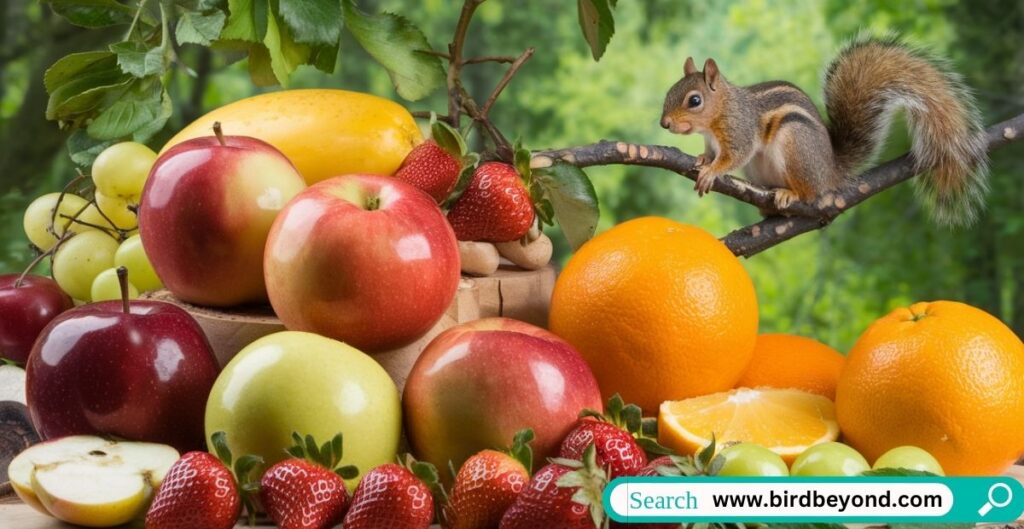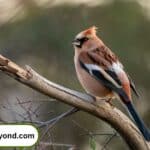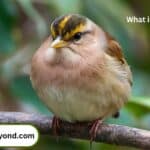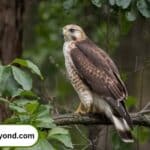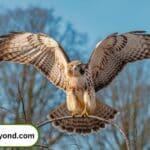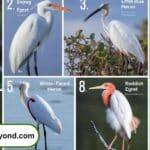In the world of backyard wildlife, few creatures capture our imagination quite like squirrels. These nimble, bushy-tailed acrobats are a common sight in parks, gardens, and forests across the globe. As nature enthusiasts and animal lovers, we often find ourselves wondering about their dietary habits. One question that frequently pops up is: Can squirrels eat apple cores? This comprehensive guide will delve into the juicy details of squirrel nutrition, focusing on the safety and suitability of apple cores in their diet.
The Curious Case of Squirrels and Apple Cores
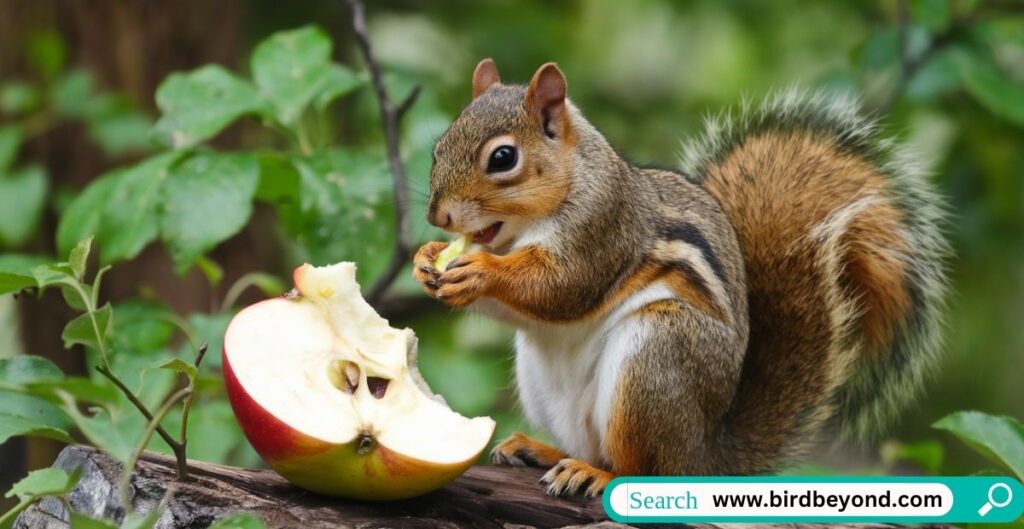
Squirrels, those agile acrobats of our backyards and parks, have long fascinated humans with their quirky behaviors and diverse diets. Among the many questions that arise about these furry foragers, one stands out: can squirrels eat apple cores? This seemingly simple query opens up a fascinating exploration into squirrel nutrition, wildlife feeding practices, and the delicate balance of urban ecosystems. Apples, with their sweet flesh and crisp texture, are undoubtedly attractive to squirrels. But the core, with its seeds and tough center, presents a more complex scenario. As we delve into this topic, we’ll uncover the nuances of squirrel dietary habits, the potential risks and benefits of apple cores, and the broader implications of human-wildlife interactions. From the nutritional value of apples to the hidden dangers lurking in their seeds,
A Nutty Encounter: Squirrels’ Natural Diet
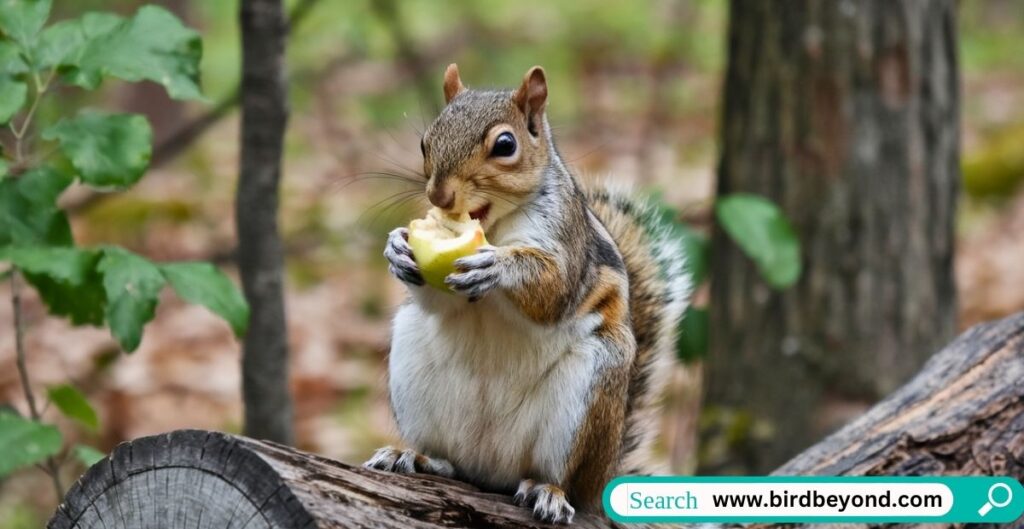
In their natural habitats, squirrels exhibit a diverse and adaptable diet that reflects their resourcefulness as foragers. These clever creatures have evolved to thrive on a wide range of food sources, adapting their preferences to seasonal availability and local ecosystems. At the heart of a squirrel’s diet are nuts and seeds, which provide essential proteins and fats. Acorns, walnuts, and pecans are particular favorites, offering dense nutrition that squirrels often cache for leaner times. Beyond nuts, squirrels eagerly consume various seeds, from sunflower to pumpkin, supplementing their diet with these energy-rich morsels. But their palate extends far beyond these staples. Squirrels are opportunistic eaters, happily munching on fruits, fungi, tree bark, and even the occasional insect. This varied diet ensures they receive a broad spectrum of nutrients, helping them maintain their high-energy lifestyle through changing seasons.
What do squirrels typically munch on?
In the wild, squirrels feast on:
- Nuts (acorns, walnuts, pecans)
- Seeds (sunflower seeds, pumpkin seeds)
- Fungi (mushrooms)
- Tree bark and buds
- Insects and small animals (occasionally)
The role of fruit in a squirrel’s diet
Fruits, including apples, play a significant role in a squirrel’s diet, especially when other food sources are scarce. They provide essential vitamins, minerals, and natural sugars that contribute to a squirrel’s overall health. However, not all fruits are created equal when it comes to squirrel consumption.
Apple Appetites: Can Squirrels Safely Snack on Cores?
Now, let’s get to the core of the matter: Can squirrels eat apple cores? The short answer is yes, but with some important caveats. To understand why, we need to break down the components of an apple core and examine their potential effects on our furry friends. The question of whether squirrels can safely eat apple cores is more nuanced than it might initially appear. While squirrels can and do eat apples, including the core, there are several factors to consider. The fleshy part of the apple poses no threat to squirrels and can be a nutritious snack, offering natural sugars, fiber, and vitamins. However, the core, particularly the seeds, requires closer examination. Apple seeds contain a compound called amygdalin, which can break down into hydrogen cyanide when digested. This has led to concerns about potential toxicity.
Breaking down the apple core: seeds, stem, and flesh
An apple core consists of:
- Seeds (also known as pips)
- Tough, fibrous flesh
- Stem
While the flesh and stem pose no significant threat to squirrels, the seeds are a different story.
The cyanide conundrum: Are apple seeds toxic to squirrels?
Apple seeds contain a compound called amygdalin, which, when digested, breaks down into hydrogen cyanide. Cyanide is indeed toxic to squirrels, as it is to many other animals, including humans. However, the amount of cyanide in a few apple seeds is typically not enough to cause harm to a squirrel.
“The toxicity of apple seeds is often overestimated,” says Dr. Jane Good squirrel, a wildlife nutritionist. “A squirrel would need to consume a large number of seeds to experience any adverse effects.”
Quantity matters: How much is too much?
While a few apple seeds won’t harm a squirrel, it’s best to err on the side of caution. The exact number of seeds that could cause toxicity varies based on the squirrel’s size and overall health. As a general rule, it’s safer to remove the core and seeds before offering apples to squirrels.
Core Concerns: Potential Risks and Benefits
When considering the safety of apple cores for squirrels, it’s essential to weigh both the potential risks and benefits. On the positive side, apples, including parts of the core, offer nutritional value to squirrels. The flesh provides natural sugars for quick energy, while the fiber aids in digestion. Apples also contain vitamins and minerals that can contribute to a squirrel’s overall health. The core itself, being fibrous, can help wear down a squirrel’s continuously growing teeth, which is beneficial for their dental health. However, the risks associated with apple cores primarily center around the seeds. While the amygdalin content in a few seeds is generally not enough to cause toxicity, repeated consumption of large quantities could potentially lead to cyanide buildup. Another concern is the potential for choking or digestive blockages,
Nutritional value of apple cores for squirrels
Apple cores do offer some nutritional benefits to squirrels:
- Fiber: Helps with digestion
- Natural sugars: Provides quick energy
- Vitamins: Contains small amounts of vitamin C and A
However, these benefits can be obtained from the fleshy part of the apple without the risks associated with the seeds.
Dental dilemma: Can apple cores harm squirrel teeth?
Squirrels have strong, sharp incisors that continuously grow throughout their lives. While gnawing on tough foods like nuts and seeds helps keep their teeth in check, the hard seeds in apple cores could potentially cause dental issues if consumed in large quantities.
Digestive dynamics: How squirrels process apple cores
Squirrels have a relatively efficient digestive system that can handle a variety of plant materials. However, the fibrous nature of apple cores may be more challenging for them to digest compared to other parts of the fruit.
| Part of Apple Core | Digestibility for Squirrels | Potential Risks |
|---|---|---|
| Flesh | High | Low |
| Seeds | Moderate | Contains amygdalin |
| Stem | Low | May cause choking |
Serving Suggestions: Best Ways to Offer Apples to Squirrels
If you’ve decided to include apples in your squirrel feeding routine, here are some safe and effective ways to do so:
To core or not to core: Preparing apples for squirrel consumption
The safest approach is to remove the core and seeds before offering apples to squirrels. This eliminates any risk associated with seed consumption while still providing the nutritional benefits of the fruit.
Size matters: Cutting apples into squirrel-friendly portions
Cut apples into small, manageable pieces. This not only makes it easier for squirrels to eat but also reduces the risk of choking.
- Slice apples into thin wedges
- Cut apple pieces no larger than 1 inch in diameter
- Remove any stems or leaves
Presentation perfection: Creative ways to serve apples in your yard
Make apple-feeding time fun and engaging for both you and the squirrels:
- Apple kebabs: Thread apple pieces onto a skewer and attach it to a tree or feeding station.
- Frozen treats: Freeze apple slices for a refreshing summer snack.
- Apple piñata: Hang a whole apple from a string and watch squirrels figure out how to access it.
Beyond the Core: Alternative Fruits for Squirrels
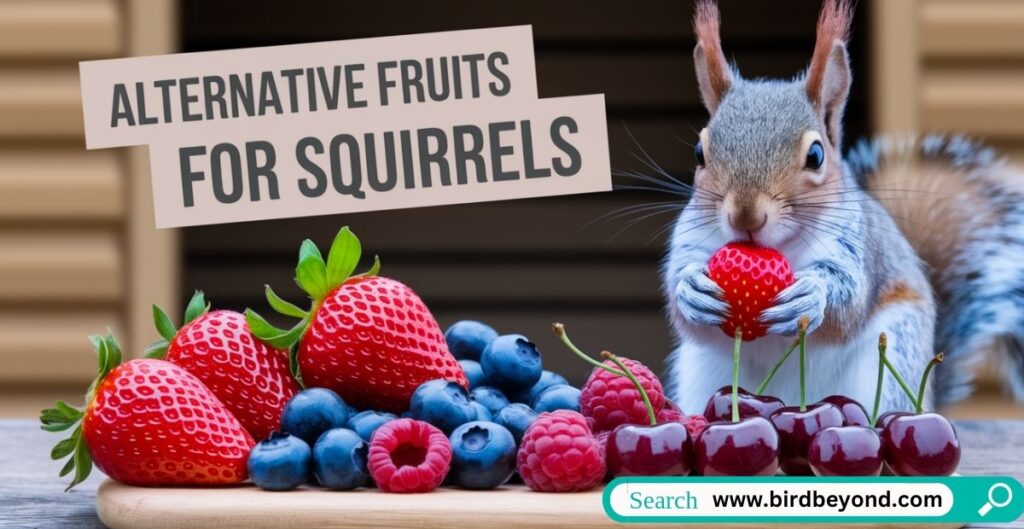
While apples can be a tasty treat for squirrels, variety is key to a balanced diet. Here are some other fruits that squirrels can safely enjoy:
Nature’s candy store: Other safe fruits for squirrels
- Berries (strawberries, blueberries, raspberries)
- Grapes (in moderation due to high sugar content)
- Melon (watermelon, cantaloupe)
- Peaches (remove the pit)
- Pears
Seasonal selections: Matching fruit offerings to the time of year
Offer fruits that are in season to provide squirrels with a natural and varied diet:
- Spring: Strawberries, cherries
- Summer: Peaches, watermelon
- Fall: Apples, pears
- Winter: Citrus fruits (in moderation)
Variety is the spice of life: Creating a balanced diet for backyard squirrels
Remember that fruits should only make up a small portion of a squirrel’s diet. Incorporate a mix of nuts, seeds, and vegetables to ensure they receive all necessary nutrients.
The Human Factor: Feeding Wildlife Responsibly
As we explore whether squirrels can eat apple cores and other foods, it’s crucial to consider the broader implications of wildlife feeding.
To feed or not to feed: Weighing the pros and cons
Pros of feeding squirrels:
- Provides supplemental nutrition during food scarcity
- Allows for close observation and enjoyment of wildlife
- Can help squirrels survive harsh winters
Cons of feeding squirrels:
- May create dependency on human-provided food
- Can lead to overpopulation in certain areas
- Might attract unwanted pests or predators
Local laws and guidelines: What you need to know
Before setting up a squirrel feeding station, check your local regulations:
- Some areas prohibit feeding wildlife
- Certain methods of feeding may be restricted
- There may be guidelines on the types of food allowed
Keeping it clean: Maintaining a healthy feeding area
If you choose to feed squirrels:
- Clean feeding areas regularly to prevent the spread of disease
- Remove uneaten food to avoid attracting pests
- Use appropriate feeders that keep food dry and fresh
Squirrel-Approved Apple Alternatives
While apples can be a tasty treat, there are many other foods that squirrels naturally prefer and that may be more beneficial to their health.
Nuts and seeds: A squirrel’s natural favorites
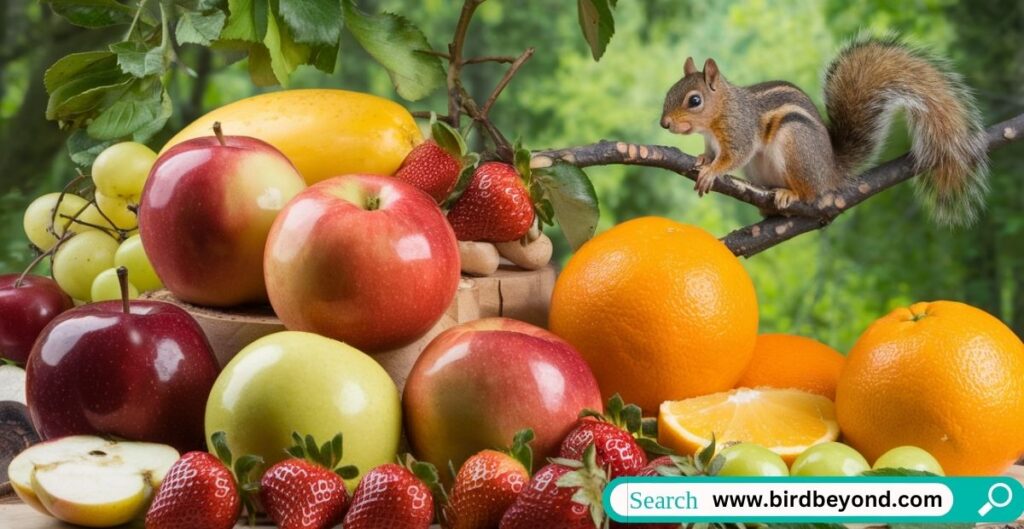
Squirrels are particularly fond of:
- Acorns
- Walnuts
- Pecans
- Almonds (unsalted)
- Pumpkin seeds
- Sunflower seeds
These foods are high in protein and healthy fats, which are essential for squirrels’ energy needs and coat health.
Veggie delights: Surprising plant-based treats squirrels enjoy
Many vegetables are safe and nutritious for squirrels:
- Leafy greens (spinach, kale)
- Carrots
- Sweet potatoes
- Squash
- Broccoli
Commercial options: Store-bought squirrel foods and their benefits
There are commercially available squirrel foods that provide a balanced diet:
- Squirrel blocks: Formulated to meet nutritional needs
- Seed mixes: Blend of nuts and seeds
- Dried fruit mixes: Offer variety without the risk of spoilage
Observing Squirrel Behavior: Learning from Their Food Choices
Watching how squirrels interact with different foods can be both entertaining and educational.
Watch and learn: How squirrels interact with different foods
Squirrels often display fascinating behaviors when presented with new foods:
- They may sniff and examine unfamiliar items before eating
- Some squirrels will bury food for later consumption
- They may use their paws to manipulate food items, similar to how they handle nuts
Seasonal shifts: Changes in squirrel feeding habits throughout the year
Squirrels’ dietary preferences change with the seasons:
- Spring: Focus on buds and flowers
- Summer: Increased fruit consumption
- Fall: Heavy emphasis on nut gathering and storage
- Winter: Reliance on stored foods and tree bark
Squirrel intelligence: Problem-solving skills in food acquisition
Squirrels are known for their clever problem-solving abilities when it comes to accessing food:
- They can learn to open complex bird feeders
- Some squirrels have been observed using tools to reach food
- They remember the locations of food sources over long periods
Coexisting with Backyard Wildlife: Beyond Feeding
Creating a squirrel-friendly environment goes beyond just offering food.
Creating a squirrel-friendly habitat
To make your yard more appealing to squirrels:
- Provide water sources like birdbaths or shallow dishes
- Offer nesting boxes or leave dead trees (if safe) for natural nesting sites
- Plant native trees and shrubs that produce nuts and berries
Natural food sources to plant in your yard
Consider adding these plants to your landscape:
- Oak trees (for acorns)
- Hickory trees
- Berry bushes (blackberries, raspberries)
- Sunflowers
- Corn (as a seasonal treat)
Balancing squirrel feeding with other wildlife needs
Remember that other wildlife may be attracted to squirrel feeding areas:
- Use squirrel-proof bird feeders to ensure birds get their share
- Consider the impact on local ecosystems before large-scale feeding
- Monitor for signs of increased predator activity
The Bigger Picture: Ecosystem Impact of Feeding Squirrels
While feeding squirrels can be enjoyable, it’s important to consider the broader ecological implications.
Unintended consequences: How feeding affects local wildlife populations
Consistent feeding can lead to:
- Increased squirrel population density
- Changes in natural foraging behaviors
- Potential imbalances in local ecosystems
Spread of disease: Minimizing risks through proper feeding practices
To reduce the risk of disease transmission:
- Clean feeding areas regularly
- Avoid overcrowding by spreading food over a larger area
- Stop feeding if you notice signs of illness in local wildlife
Biodiversity boost: Potential benefits of thoughtful wildlife feeding
When done responsibly, feeding squirrels and other wildlife can:
- Support species during harsh weather or habitat loss
- Increase opportunities for nature education and appreciation
- Contribute to citizen science projects through observation and reporting
In conclusion, while squirrels can eat apple cores, it’s best to offer them apple slices without seeds to ensure their safety. By understanding squirrel nutrition and following responsible feeding practices, we can enjoy these charming creatures while supporting their health and the broader ecosystem. Remember, when it comes to feeding wildlife, a little knowledge goes a long way in ensuring that our furry friends thrive in harmony with their natural environment.
Can squirrels eat whole apples, including the core?
While squirrels can eat whole apples, it’s safer to remove the core and seeds. The fleshy part of the apple is nutritious and safe for squirrels, but the seeds contain small amounts of compounds that can be harmful if consumed in large quantities.
FAQs
Are apple seeds toxic to squirrels?
Apple seeds contain amygdalin, which can break down into cyanide when digested. However, the amount in a few seeds is typically not enough to harm a squirrel. Still, it’s best to err on the side of caution and remove seeds before feeding apples to squirrels.
How should I prepare apples for squirrels?
Cut apples into small, manageable slices or cubes. Remove the core and seeds, and wash the apple thoroughly to remove any pesticides. Offer these pieces in moderation as part of a varied diet.
What other fruits can squirrels eat safely?
Squirrels can safely enjoy a variety of fruits, including berries (strawberries, blueberries), grapes, melon, and pears. Always introduce new foods gradually and in moderation.
How often can I feed apples to squirrels?
Apples should be an occasional treat, not a staple of a squirrel’s diet. Offer small amounts once or twice a week, ensuring that nuts, seeds, and other natural foods make up the majority of their diet.
Can feeding apples to squirrels cause any problems?
Overfeeding any food, including apples, can lead to nutritional imbalances and dependency on human-provided food. It’s crucial to maintain a balanced approach to feeding wildlife.
What are the benefits of apples for squirrels?
Apples provide natural sugars for energy, fiber for digestion, and various vitamins and minerals. They can be a healthy addition to a squirrel’s diverse diet when offered in moderation.
Are there alternatives to feeding squirrels directly?
Instead of directly feeding squirrels, consider planting native fruit-bearing trees or shrubs in your yard. This provides a natural food source and supports local ecosystems.
Title: “Can Squirrels Eat Apple Cores? A Comprehensive Guide to Safe Squirrel Feeding”
Slug: can-squirrels-eat-apple-cores-safe-feeding-guide
Meta Description: Discover whether squirrels can safely eat apple cores, learn best practices for feeding apples to squirrels, and explore nutritious alternatives in this comprehensive guide to responsible wildlife feeding.

William Henry is a distinguished blogger with a flair for avian storytelling. With a wealth of experience, he delivers captivating insights and expert knowledge to Bird Beyond. William’s passion for birds and his engaging writing style make him a standout voice in the birdwatching community, offering readers both valuable information and delightful narratives.

